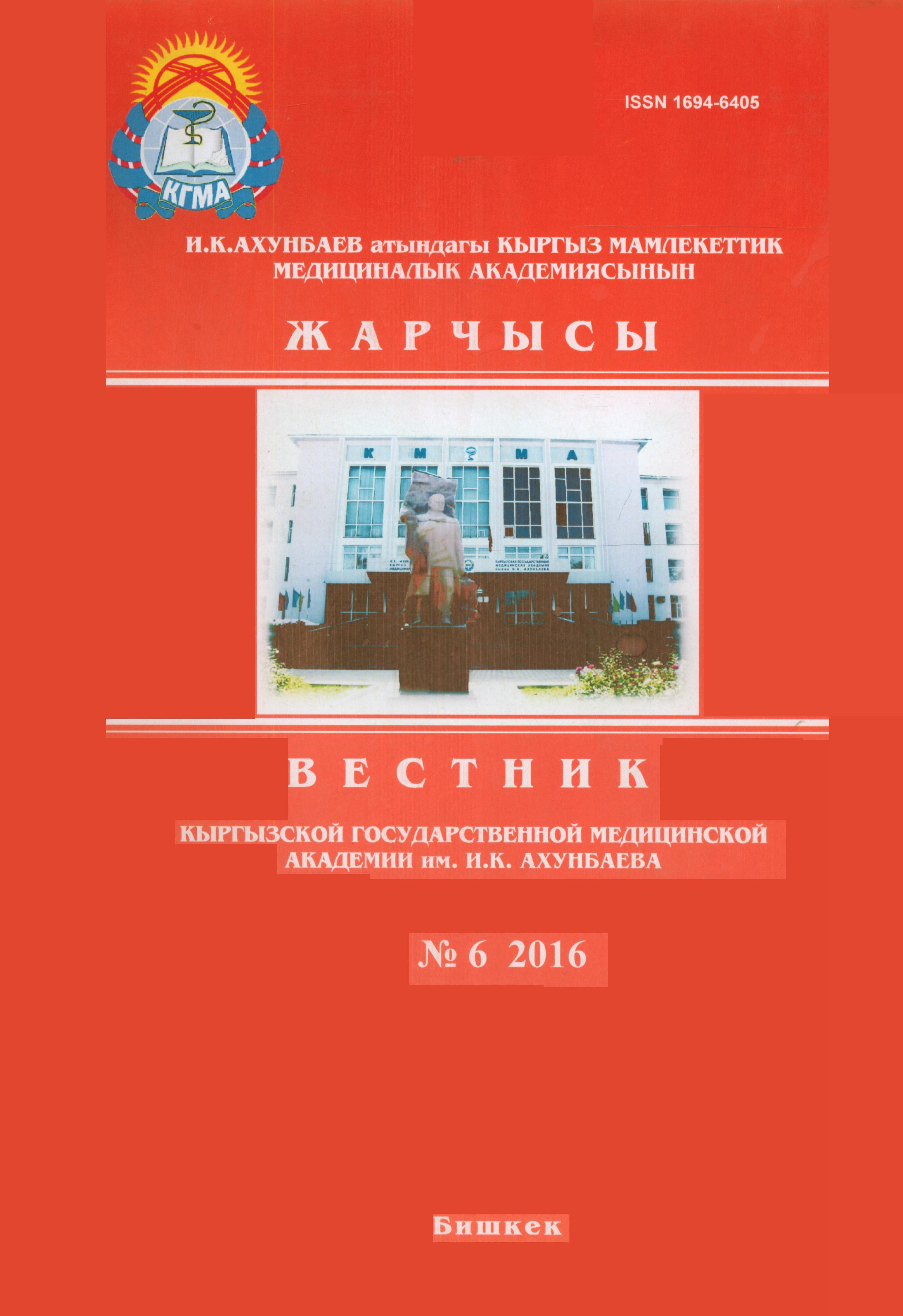THE TACTICS OF TRANSCATHETER CORRECTION FOR MULTIPLE ASD
Abstract
The clinical functional and anatomic features of congenital heart diseases were presented in the article for patients with the multiple ASD, and also possibility of adequate transcatheter correction of this contingent with occluder Amplatzer. Successful implantation of this occluder was done for 15 (93,7%%) from 16 patients, 14 patients had two defects and 1 patient had 3 defect. The Stretch diameter of the largest defect was 18,5+-2,1 mm (from 6 to 35 mm). 1 occluder technique was used for 14 patients and only in one case- with 2 occluder technique was used. Precise assessment of anatomic features of ASD is necessary for adequate correction of multiple defects, especially amount of defects, distance between them, localization and complince of ASD.
References
1. Алекян Б.Г. Транскатетерное закрытие дефекта межпредсердной перегородки с использованием Amplatzer Septal Occluder / Под ред. Л.А. Бокерия, Б.Г. Алекян, В.П. Подзолков // Эндоваскулярная и минимально инвазивная хирургия сердца и сосудов у детей. - М.: Медицина, 1999. – Гл. 13 – С.226-231.
2. Машура Й. Эндоваскулярная коррекция врожденных патологических сообщений между камерами сердца окклюдерами системы Amplatzer / Й. Машура // Международный журнал интервенционной кардиоангиологии. - 2006. - № 11. - С. 11-20.
3. Ткачева А. Н. Диагностика и эндоваскулярное закрытие вторичного дефекта межпредсердной перегородки устройством Amplatzer / А. Н. Ткачева: Дис… канд. мед. наук. – Москва, 2008.
4. Cao Q. Transcatheter closure of multiple atrial septal defects. Initial results and value of two- and three-dimensional transoesophageal echocardiography / Q. Cao, W. Radtke, F. Berger et al // Eur Heart J. – 2000. –Vol. 21, №6. –P. 941–947.
5. Carano N. Device closure of fenestrated atrial septal defect: Use of a single Amplatz atrial occluder after balloon atrial septostomy to create a single defect / N. Carano, D. Hagler, A. Agnetti et al // Cathet Cardiovasc Interven. – 2001. –Vol.53, № 11 –P. 203–207.
6. Majunke N. Closure of Atrial Septal Defect With the Amplatzer Septal Occluder in Adults / N. Majunke, J. Bialkowski, N. Wilson et al // Amer J of Cardiol. -2009. - Vol. 103, № 4. – P.550-554.
7. Masura J. Transcatheter closure of secundum atrial septal defects using the new selfcentering Amplatzer septal oc-cluder: initial human experience / J. Masura, P. Gavora, A. Formanek et al // Catheter. Cardiovasc. Diagn.- 1997. –Vol. 42, № 6. – Р. 388-393.
8.Masura J. Long-term outcome of transcatheter secundumtype atrial septal defect closure using Amplatzer septal occluders / J. Masura, P. Gavora, T. Podnar // J Am Coll Cardiol. - 2005. –Vol. 45, № 5. – P. 505-507.
9. Mazic U. Percutaneous closure of secundum - type atrial septal defects using Amplatzer Septal Occluders / U. Mazic, P. Berden, T. Podnar // ZDRAV VESTN. – 2003. –Vol.72, № 1-2. – Р.1-6.
10. Pedra C. Transcatheter closure of secundum atrial septal defects with complex anatomy / C. Pedra, S. Pedra, C. Esteves et al // J Invas Cardiol. -2004. –Vol.16, № 4- Р. 117–122.
11. Sideris E.B. Occlusion of congenital ventricular septals defects by the buttoned device. ”Buttoned device” Clinical Trials International Register / E.B. Sideris, K.P. Walsh, J.L. Haddad et al // Heart. – 1997. –Vol. 77, № 3. – P. 276-279.
12. Szkutnik M. Transcatheter closure of double atrial septal defects with a single Amplatzer device / M. Szkutnik // Cath Cardiovasc Interv. - 2004. – Vol.61, №2. –Р. 237–241.
13. Zanchetta M. Catheter closure of perforated secundum atrial septal defect under intracardiac echocardiographic guidance using a single amplatzer device: feasibility of a new method / M. Zanchetta // J Invas Cardiol.- 2005. –Vol.17, №5. –Р. 262–265.



